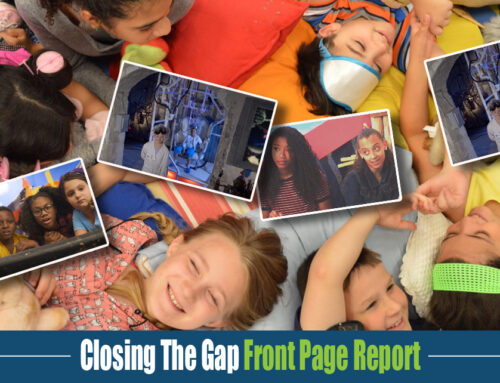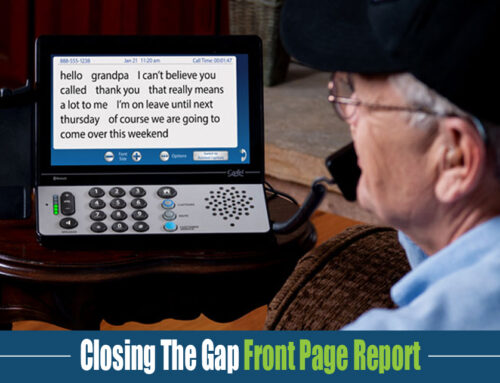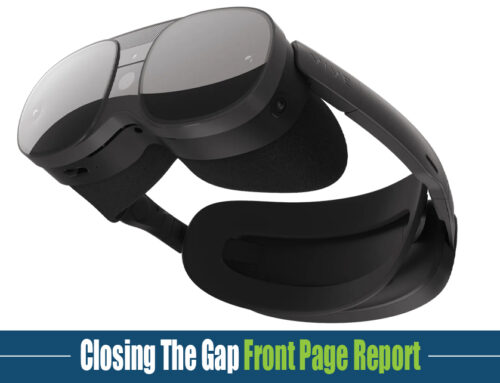

Amazon’s latest campaign helps customers learn how accessibility features make our devices and services more accessible to everyone—especially people with disabilities.
Did you know that Prime Video has 160,000 captioned titles (and counting)? Or that Fire tablets are designed to help support people with mobility disabilities? Or that you can pair compatible Bluetooth hearing aids with select Fire TV devices, and share your shopping list with Alexa?
They want to make sure you do.
As part of Amazon’s vision to be Earth’s most customer-centric company, they aim to serve and delight all customers, including people with disabilities. They’ve built products, like those mentioned above, to ensure their products are accessible to anyone and everyone. But their many accessibility features can only be used effectively if their customers understand exactly how they can help them in their everyday lives.
That’s why they’re excited to unveil their accessibility campaign, which includes a series of videos, featuring Amazon’s Jessie Lorenz and other people with disabilities, using a number of our accessibility features across Alexa, Fire TV, Kindle, and more. They hope these examples will help all of their customers learn how Amazon’s accessibility features can help them be more connected, entertained, and independent. Additionally, they’ve redesigned amazon.com/accessibility to make it easier for customers to explore more.
Audio-described version and transcript.
“More than one billion people worldwide have a disability,” said Peter Korn, director of accessibility for Amazon Devices. “What I love most about this work is the authentic representation—how real people with real disabilities are featured, highlighting how our products and services can help customers with disabilities live the life they want. At Amazon, we strive to build accessible products alongside people with disabilities, to benefit everyone. And with our redesigned accessibility website, we’re working to make these offerings easy to discover, too.”
Alexa accessibility features extend to Fire tablets
Tap to Alexa, now available on Fire tablets, allows you to interact with Alexa using touch instead of voice.
When Edwin was 19 years old, he had a spinal cord injury that resulted in paralysis from the neck down and the need to use a ventilator. In those early years, the 1980s, Edwin benefited from new power wheelchair technology that allowed him to independently drive his wheelchair using a sip-and-puff straw. However, beyond supporting his mobility, technology largely hadn’t yet evolved to meet his needs, and he heavily relied on family caregivers to assist him.
Now, at 61 years old, Edwin loves using his smart home devices to support his independence. “Memories of the past have faded as voice assistants, the internet, and apps have opened up a world of controlling my home environment and the work that I do today,” said Edwin. Edwin has a speech disability, so he needs to take multiple steps to work around voice assistants not understanding his commands. For example, he uses the Alexa app to control some devices around his home while asking his caregivers to engage with Alexa to manage other tasks. While Alexa has helped improve Edwin’s independence, he wishes using it was simpler for people with speech disabilities.
Tap to Alexa, which lets customers interact with Alexa via touch instead of voice, is now available on Fire tablets, helping make Alexa more accessible for customers like Edwin.
Bringing Tap to Alexa to more devices and adding new functionality
Tap to Alexa, previously only available on Echo Show devices, provides on-screen tiles to allow quick access to common requests, like setting an alarm or playing music. With its new availability on Fire tablets, this can be especially useful for customers with speech and/or mobility disabilities, and who prefer using devices with more portability, like Edwin, who mounts his tablet to his wheelchair. Additionally, the feature can be helpful for customers who prefer to interact with Alexa without speaking.
For the first time, customers can use Tap to Alexa with a compatible Bluetooth switch to navigate and interact with their Fire tablet, which can be helpful for individuals with limited mobility. Customers can also use a new Text to Speech function, where they can type a phrase and then tap an icon to have it spoken out loud. This can be helpful for customers with speech disabilities or unique voice patterns, or who are nonverbal or nonspeaking.
According to the American Speech-Language-Hearing Association, over 2 million people in the U.S. have expressive language disabilities and rely on augmentative and alternative communication (AAC) devices to generate speech to interact with the world.
“We brought Tap to Alexa to Fire tablets, along with offerings like Text to Speech, to make it easier for more people to access smart home technology,” said Juliana Tarpey, senior product manager for Alexa for Everyone. “After setting up their devices, customers can directly ask Alexa, with just a tap, to play their favorite TV show, turn on the lights, or help them communicate with friends and loved ones. It may seem simple, and it is—it provides simpler access to Alexa’s benefits to help support all our customers.”
As David Mahmarian, multimodal user experience (UX) designer for Alexa for Everyone, explained, “I always envisioned Tap to Alexa as a portable, tablet-based experience ever since I started working on the initial designs for Echo Show devices. From the beginning, I thought of my younger brother Paul and considered how this could benefit him by providing the ability to interact with Alexa independently and also help him with communication. Paul is autistic and doesn’t speak at all, but he grew up using assistive technologies to help him generate speech. My personal hope in offering Tap to Alexa on Fire tablets, with this added Text to Speech functionality, is that they will be a useful tool and help people like my brother feel more connected, providing access to all the great things Alexa can do.”
Innovating alongside customers
The Alexa for Everyone team collaborated with members of the United Spinal Association based in Atlanta, Georgia. Edwin, along with other members of the nonprofit with speech and mobility disabilities, provided feedback on the feature during development.
Similar to Edwin, Angie has used a wheelchair since a spinal cord injury. Angie often speaks at a low volume, and her voice fluctuates throughout the day, which makes it hard for her to use voice technology. After using Tap to Alexa on a Fire tablet and being pleased with the experience, Angie said, “This makes it simple … it’s going to make everything easier.” When lying down, for example, Angie said her voice often feels weaker and her dexterity is limited. “If I’m lying down, Tap to Alexa is going to make my life 100% better.”
“By actively engaging with Amazon’s Alexa for Everyone team, we are providing opportunities for United Spinal members who are passionate about technology to work directly with design teams on accessibility innovations that will fuel their independence,” said Adina Bradshaw, vice president of Tech Access at United Spinal. “It is a rewarding process for everyone involved.”
Tap to Alexa on Fire tablets (8th generation and later) is available today in the U.S., UK, Germany, and Japan.
If you’re interested in learning more about Alexa speech-related features, like Adaptive Listening, and collaborations with companies, including Voiceitt.
This Amazon’s above story is from Amazon’s news page






Leave A Comment
You must be logged in to post a comment.